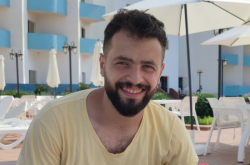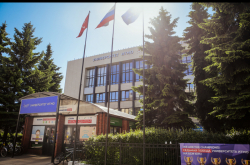Russian IT labor market
Currently, there is a significant labor shortage on the Russian job market. This is indicated by the company’s own “hh-index,” which reflects the ratio of active job-seekers per vacancy, currently standing at 3.6 individuals per vacancy (the normal range is from 4 to 8). The unemployment rate is currently at 2.4%. The most pronounced labor shortages are observed in sectors with mass hiring: such as manual labor, manufacturing, sales, retail, transportation, and construction.
In contrast, there are many IT specialists out there and thus the situation in the field is somewhat reversed: the hh-index is 8, meaning that the number of job-seekers significantly exceeds the number of available positions, leading to increased competition among IT specialists.
“As the activity of job-seekers grew, so did the number of applicants per open position in IT. It is currently 8, the top limit. And if a couple of companies in the field suddenly decide to close down, the hh-index will rise even higher. If you work with data, you understand that in such a case, every fluctuation will lead to drastic changes in the paradigm,” explained Maria Buzunova.

Maria Buzunova's lecture at ITMO. Photo by Dmitry Grigoryev / ITMO.NEWS
IT in Russian regions
Traditionally, Moscow is at the top by the number of vacancies (accounting for 46% of all vacancies, whereas only 11% originate in St. Petersburg) because many Russian companies are registered there.
However, the hh-index in St. Petersburg (9.1) is currently higher than in Moscow (6.8) due to the high cost of real estate in the nation’s capital. For many, including students and young specialists, finding a job in Moscow can be challenging; so, St. Petersburg becomes the second magnet for IT talents because the cost of living in the city is still lower than in Moscow. At the same time, there are fewer IT vacancies in St. Petersburg, which drives up the competition.
Competencies of IT professionals
Last summer, the IT market saw a surge in job-seekers without prior work experience, which the Russian media christened the “junior jam.” However, the situation is changing. In August 2023, the hh-index for junior programmers and developers reached 15.5, and by September 2024 it dropped to 8.4. At the same time, higher numbers of experienced experts entered the market: the corresponding hh-index grew from 5.7 to 7.5 for middle-level specialists and from 0.7 to 1.1 — for senior ones.
Demand for remote positions
Since 2021, there’s been an increase in the number of job applicants who’d like to work remotely: from 25% to 53%. Employers are also ready to look for professionals from other regions – the number of remote vacancies has grown from a little over 7,000 in January 2021 to nearly 15,000 in September 2024.

Dynamics of demands for remote IT jobs in Russia over the years. Photo by Dmitry Grigoryev / ITMO.NEWS
Top specializations
Software tester. In September 2024, over 1,500 new vacancies for testers were posted online. This is connected to the fact that many new software products are being launched on the Russian market – and they need to be tested.
Data analyst. The number of corresponding job postings released in a month grew from 300 in January 2021 to nearly 800 in September 2024.
Project manager. As the number of new projects increases, so does the demand for employees who will manage them: whereas in 2021, 2,500 such positions were posted per month, in September 2024, this number is over 4,000.
Systems administrator. Due to the transition to Russian-made hardware and the obsolescence of software, the market needs many specialists to manage transition processes. Because of that, the number of vacancies in the field grew from over 2,000 in 2021 to 3,700 in September 2024.
Graphic designer. Online stores and marketplaces are actively developing, which means a greater demand for specialists, especially given that the visual aspects influence customer choices. For this reason, the number of job vacancies in UX/UI design will also increase. The number of vacancies in graphic design has approximately doubled since 2021, rising from nearly 500 to over 1,000.
“How can you predict which specialization will be in demand in the near future? The number of courses in the field is usually a good predictor. Before launching a new course, schools typically reach out to a business and inquire about the number of particular experts to be required in the future and the current number of vacancies. If the number is high, the course will be launched. So, if you are looking for a new specialization, just google how many training courses there are on the topic,” added Maria Buzunova.

Maria Buzunova. Photo by Dmitry Grigoryev / ITMO.NEWS
Salaries
Salaries in the IT sector are currently rising, averaging 86,600 rubles in Russia in 2024 compared to 69,800 rubles in 2020. However, salary dynamics in IT can vary: for graduates of online courses, as inexperienced specialists, salaries may remain unchanged or even decrease, while those for mid-level and senior professionals are expected to grow.
IT specialists in Moscow receive the highest salaries, with an average of 140,974 rubles in 2024, followed by St. Petersburg at 102,460 rubles.
At the same time, salary expectations continue to rise – on average, IT specialists across Russia desire a salary of 94,800 rubles in 2024. This figure is lower than the average offered salary, indicating that employers may not always meet the increasing demands: the exit of many foreign companies from the market has lowered employer salary expectations. Consequently, companies are seeking employees in regions where salary expectations are lower.
Data scientists have the highest salaries – 237,000 rubles on average, while graphic designers have the lowest salaries – 60,000 rubles on average.
The lecture was held as part of the national youth forum We Are From Neva, organized by the Committee on Youth Policy and Interactions with Educational Organizations. At the section We Develop, held at ITMO, representatives of Sberbank, Positive Technologies, VK mini apps, and other experts in science, education, and IT industry discussed the challenges in contemporary digitalization, reviewed tech achievements, trends, and current tasks in the IT sector. At the forum, young scientists presented their ideas, including high-tech startups already on the market, Silkins and byScoby.





